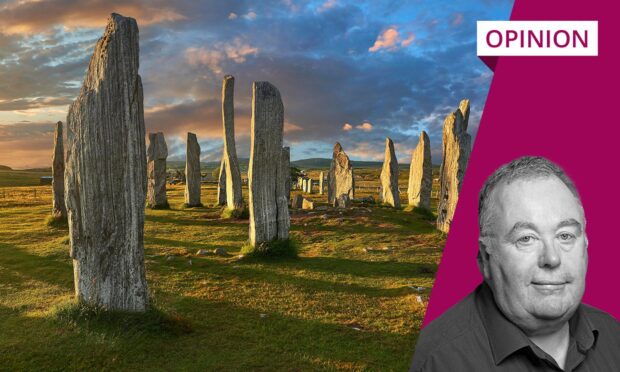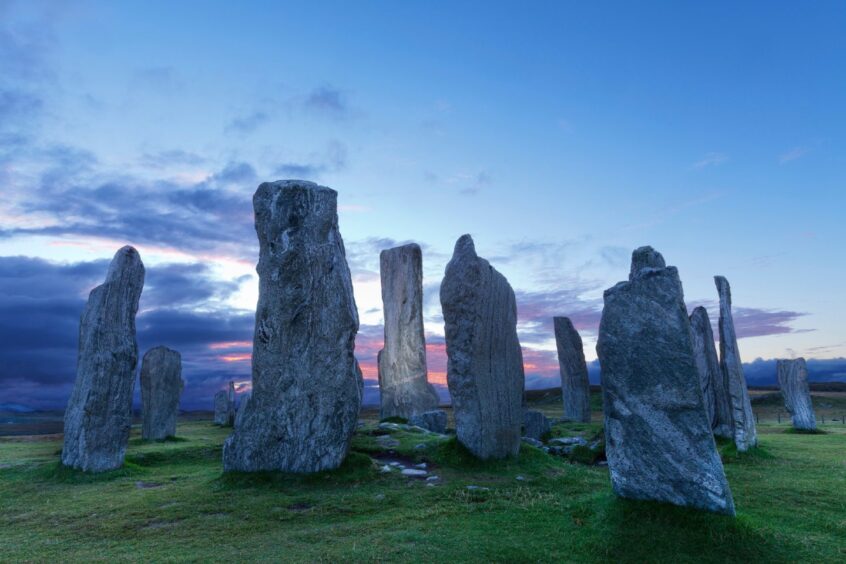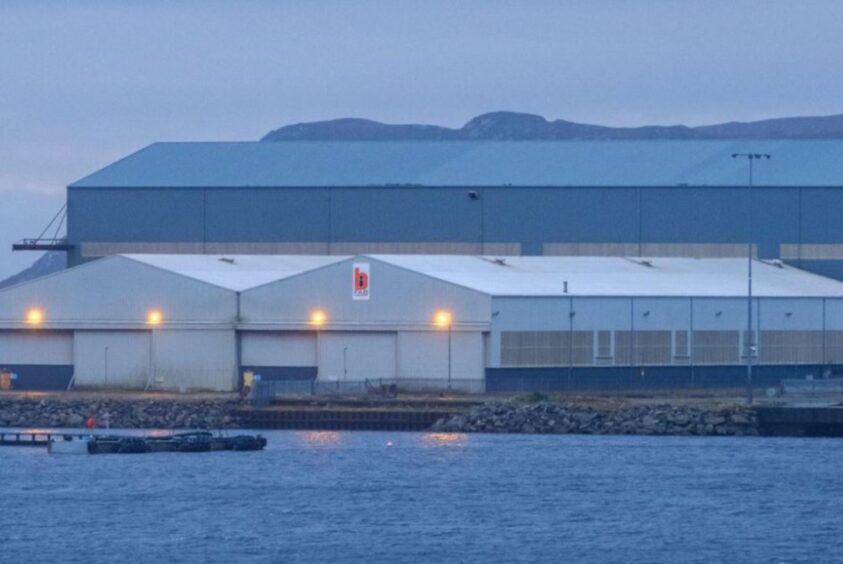Our famous Callanish Stones are increasing phenomenally in popularity.
The good news the other day was that the trust that runs the centre on the west side of Lewis is getting a cool £10 million to improve the visitor centre and expand the services for the many people who come to see the mysterious medieval slabs for themselves.
We do not go on enough about them and the draw that they are for so many people, whether they are genuinely curious, hippies, or archaeologists puzzled by their purpose.
About 15 years ago, I recall writing a news story about an incredible 40,000 visitors coming to Callanish, or Calanais if you insist on the Gaelic, wondering what these magnificent monoliths were all about.
Now Historic Environment Scotland tells me that figure is closer to 120,000. That is incredible for islands that successive Scottish governments care so little about.
The numbers have been boosted by the rising number of cruise liners that sail into Stornoway and its brand spanking new deepwater terminal.
New double-decker buses pick them up and whisk them away on island tours, many stopping off for a gander and a cuppa at Callanish.
Not this year, though, as the construction has already begun. Do people realise Callanish’s relics are much older than piddling Stonehenge in the Sassennach south?
There are fewer stones, or ollacks as we call them, down there, and there is a security fence around them, which, of course, is always cleverly hidden in the photos. You can’t trust the English not to vandalise anything they come across.
Here at Callanish, you can touch them, kiss them, and hug them.
I’ll probably get in big trouble for saying that, but that’s what I did the other day with several other New Age types, archaeologists, and hippies inspired by the Lunar Standstill.
Later, I went to a party with an archaeologist who was celebrating finding, elsewhere on Lewis, a lower leg bone. It was quite the shindig.
No such party yet at Arnish, our local fabrication yard, with its very future and the futures of its 145 employees teetering in the balance.
New Labour government not interested in saving Arnish jobs
Although operator Harland & Wolff has a big order book for Arnish making bits of oilrigs and Thames barges, it has needed loans to get to this stage and needs more sponduliks to deliver these orders and become profitable again.
The new Labour government in Westminster seems particularly unenthusiastic about saving these jobs. They will say they are playing safe with taxpayers’ money, but you would think they would find partners, investors, or anything? Some reports say an American outfit may invest in H&W, but is Arnish safe? Who knows?
Oil is a mighty business. Anyone working to provide services and tools like, say, oil rigs for the big oil giants is dealing with some of the top business people in the world. They are also some of the wealthiest people on the planet.
Wait a minute. If someone makes their fortune in oil, we call them an oil magnate. So what do you call someone who makes their fortune selling fridges?
Hebridean Celtic Festival a great jolly ditty
It wasn’t as cold at the site of the Hebridean Celtic Festival the other day when I was out there, but it was a tad windy for a while. Who did I not bump into but a couple of lads from the top of the bill, James. Remember them and their song Sit Down back in the nineties? It was a memorable song, with the words sit and down being repeated a lot. It was a great, jolly ditty. It has a great, serious verse that is often quoted by anti-poverty campaigners and others. It goes: “Now I’ve swung back down again, and it’s worse than it was before. If I hadn’t seen such riches, I could live with being poor.”
They were in great form. Founder Jim Glennie said he was no longer a Mancunian and was now living a quieter life near Ullapool but often came across the Minch to Lewis, although it was his first time at the festival. And now he was playing at it. Cool.
Pumping a few million quid into the economy each July, the HebCelt is a great success. Some came quite a distance. Box player extraordinaire Sharon Shannon came from Ireland. I was a hand’s length from Willie Campbell. He had come all the way from North Tolsta. I know, amazing. Willie made it worthwhile by working the crowd to the max.
My new friend, the partying archaeologist, has just got back in touch. He complains about not having any money and that he might have to do something else. I really don’t know what he’s talking about, though. He is an archaeologist, and he’s surprised that his career lies in ruins.
Iain Maciver is a former broadcaster and news reporter from the Outer Hebrides



Conversation